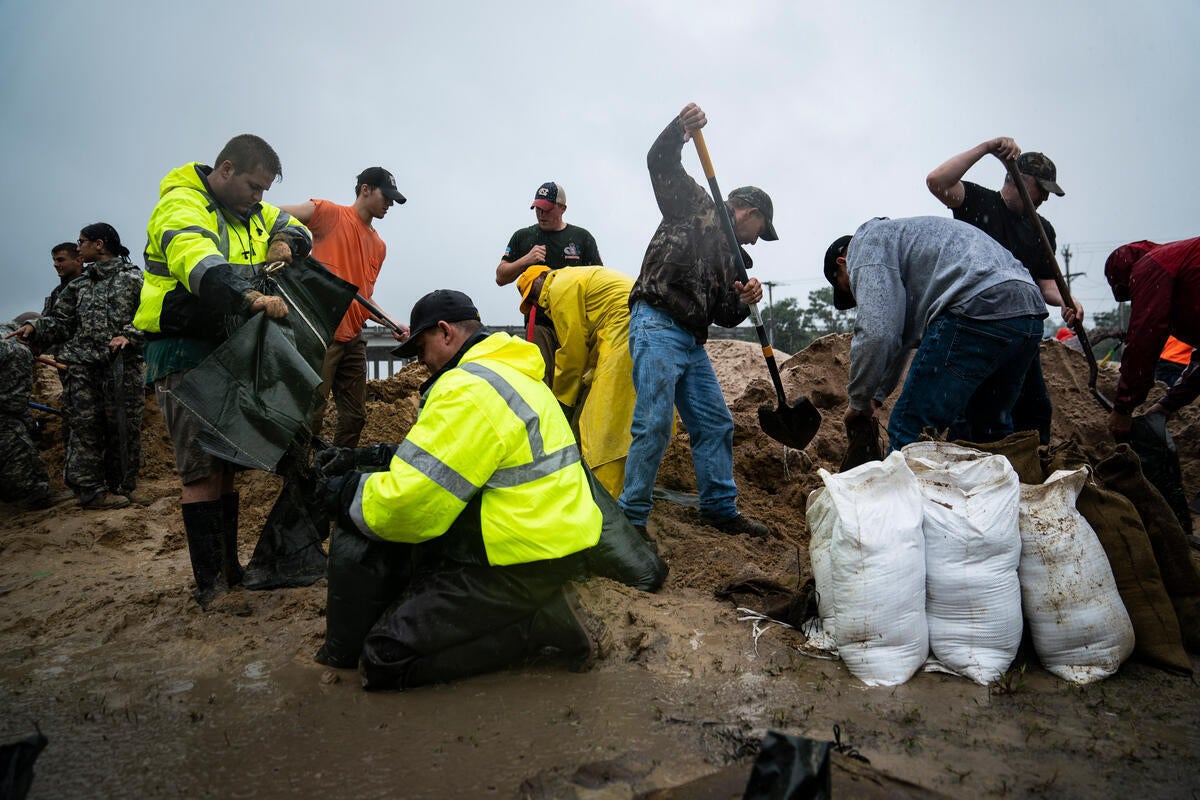On April 4, the Federal Emergency Management Agency (FEMA) was directed under the Trump administration to eliminate one of the largest disaster preparedness programs in the country. By defunding the Building Resilient Infrastructure and Communities (BRIC) program, the administration will be canceling more than $882 million in funding aimed at helping communities reduce their risks and minimize costs ahead of natural disasters. These programs help keep people safe and save taxpayer dollars when future storms hit. As we enter this year’s hurricane season, BRIC funding cuts, along with other actions targeted at dismantling disaster safety nets, leave vulnerable states and communities less prepared than ever.
To address the growing risk of hurricanes and other natural disasters, BRIC was established during President Trump’s first term and continues to have strong bipartisan support. “I want to put Americans first. That includes investing in infrastructure to protect families from the risk of flooding. We have a program to do that. It’s called BRIC,” said U.S. Senator Bill Cassidy (R-LA) in recent statement.
Since its establishment, the demand for BRIC resources has significantly exceeded available funding, underscoring the real need for this disaster preparedness initiative. It is essential for Congress and the administration to take prompt action to restore BRIC. This is what could happen if the federal government does not act:
Families will be at increased risks of disaster impacts
States like Florida, Louisiana, Texas, North Carolina and others often feel the brunt of hurricane season, costing billions of dollars in disaster response and recovery. Last year’s Hurricane Helene damaged or destroyed 100,000 family homes, killed 250 people and cost more than $78 billion – and that is just one storm. It is critical that vulnerable states and communities prepare for foreseeable disaster impacts, especially as hurricanes continue to intensify and become more frequent.
BRIC funded projects include advancing infrastructure, flood control, building elevations and more in local communities across the country. By canceling funding, the administration will leave these projects, many of which are already in development and have been promised grants by the federal government, unfunded and potentially incomplete. Not only does this increase the risks for families, but it leaves localities and governments in a bind with bills to pay and holes in their budgets.

LUMBERTON, NC – SEPTEMBER 14 : 40 members of the National Guard and 100 volunteers fill sand bags and build a wall across train tracks where flood waters flowed into Lumberton in hurricanes past behind West Lumberton Baptist Church on Friday, Sept 14, 2018 in Lumberton, NC. North Carolina State Senator Danny Earl Britt, Jr. organized the action through facebook in defiance of CSX Transportation but with permission of the Governor to try and prevent major flooding in the area. (Photo by Jabin Botsford/The Washington Post via Getty Images)
Disaster will cost taxpayers more money
BRIC provides an investment to curb future disaster recovery spending, which is a significant need considering the U.S. was hit by 27 individual disasters in 2024 and each was at least $1 billion in damages.
Preparing ahead of disasters is not only better for families in vulnerable areas, but also better for taxpayers. The U.S. Chamber of Commerce, the U.S. Chamber of Commerce Foundation and Allstate found that one dollar invested in resilience saves $13 in avoided damages, clean-up costs and economic impacts. BRIC is a hand-up, not a hand-out to at-risk communities who are prone to catastrophic weather events, and in the long term, investing in the program is better for all taxpayers.
In addition to saving taxpayer dollars, BRIC projects also have potential to stimulate local economies and provide good-paying jobs for mitigation projects, requiring skilled labor, engineering and construction work.
There will be less power at the state and community level
By defunding BRIC, the federal government is also taking power away from state and localities, which know better than anyone what their communities need to prepare ahead of disasters. BRIC helps local governments execute pre-disaster efforts that support their specific needs and reduce hazard risks.
And with hurricanes and other disasters occurring more frequently and with more severity, fulfilling pre-disaster projects is more important than ever as it is ensuring local leaders have the funding they need to protect their residents.
We don’t know yet what this hurricane season or future seasons will bring. But we do know that without BRIC, vulnerable communities that face flooding and related storm damage are less prepared to handle the impacts. It’s critical that the administration, lawmakers and state leaders take action to reinstate this effective, popular and bipartisan program that was put forth to protect communities.










